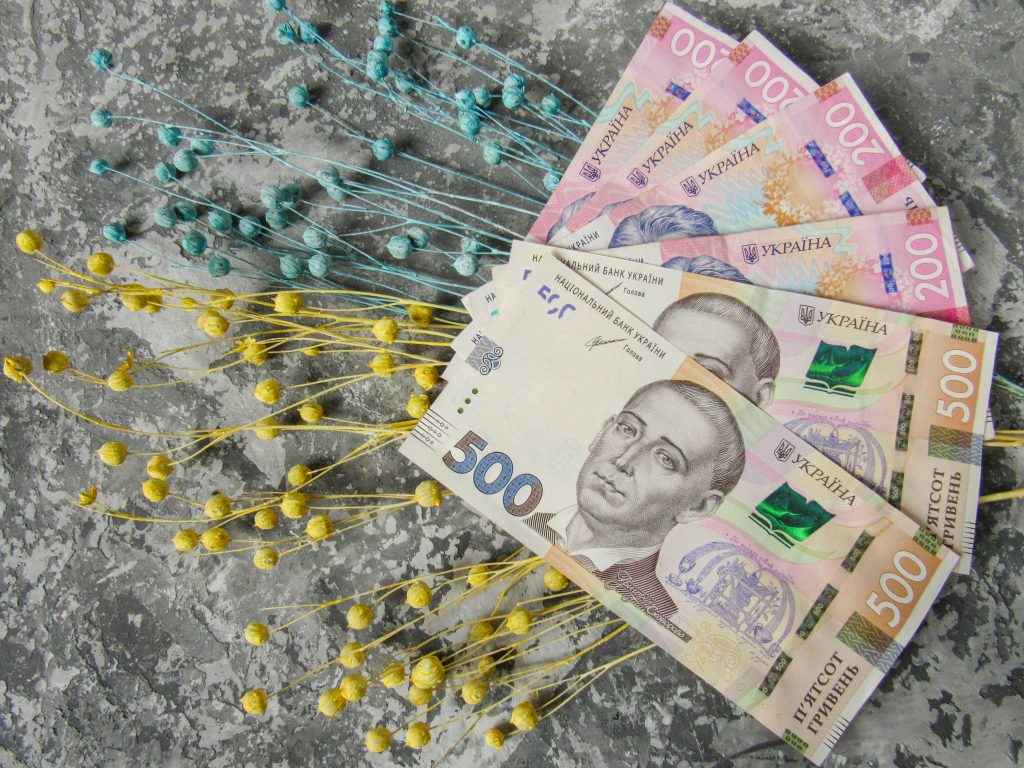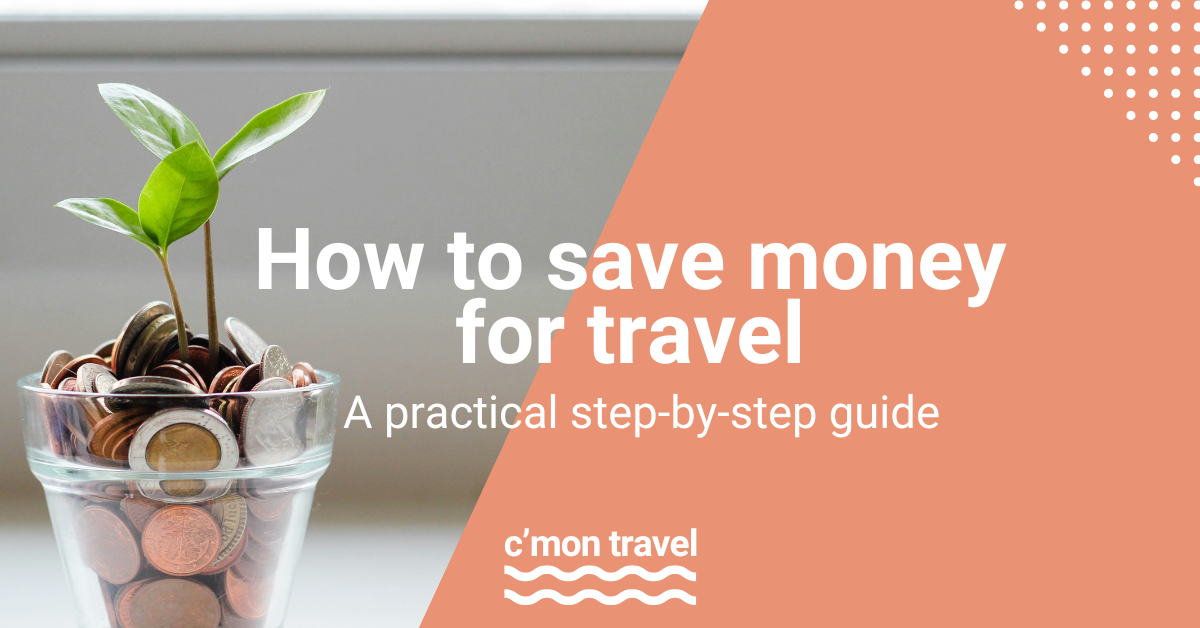Wondering how to save money for your next adventure? I got you! I have saved up, quit my job and gone long-term travelling four times! So I know a bit about the work-save-travel-repeat formula. I have created a practical guide to help you save money to fund your next adventure.
How to save money for travel:
- Set up a dedicated travel fund
- Track your spending
- Set a realistic budget
- Find your ‘excess’ (what you can save)
- Set a savings goal
- Automate your savings
- Sell excess items
- Increase income
- Mindset
In this article, I will go through each of these steps in more detail to get you on your way!

1. Set up a dedicated travel fund
It is easier than ever to open a new bank account. Most online banking apps have the option to open a new current/checking account instantly online.
If you are aiming to go travelling in the next 6 – 11 months it is best to use an ordinary current/checking account so you can access the money easily.
This is where you will put all your savings towards travel. If you get a debit card with this account I recommend cutting it up. This account is not for spending! We want this money ‘out of sight and out of mind’ until it is time for travel 🙂

2. Track your spending and income
To get a realistic idea of how much you can save (and how quickly you can get on the road!) we need to take an honest look at our income and outgoing i.e. how much we are earning and how much we are spending.
It is important to look at the exact numbers because we often spend more than we realise. Although this can be confronting and even make us feel worse it is important and can be empowering when we see where we have the potential to save more money.
You can use spending tracking apps or the spending section of your mobile banking app however unless you are manually ensuring every item is categorized correctly it can be misleading.
The best method I have found is to download your last 30 days’ transactions on your banking app as an Excel document. In an Excel document sort according to vendor and from there, you can work out how much you are spending in each area of your life i.e. groceries, clothes, socialising, gas, bills etc.
Also, make a note of your income from the month.

3. Make a realistic budget
When reviewing your spending from the last month make a note of places you could save money. Look for items that are not necessities such as:
- Eating out regularly
- Take away coffee
- Subscriptions
Don’t get me wrong I am all for treating myself but when I am planning an amazing trip, that takes priority and I can happily forgo my Chinese takeaway, well not happily, but I do it!
Be realistic though and don’t make your budget too strict. You will end up breaking it and that often leads to abandoning the budget altogether. It’s like eating the whole pizza instead of one slice when you break a crash diet. Moderation is key. For example, I have a line for cáfe’s on my budget because I know I love a lovely latte in a cute coffee shop so better to prepare for that and enjoy it than set myself up for failure.
Create a new budget for the months ahead using your previous spending and income as a guide.
This can be a bit more complicated if your income is variable such as if you are self-employed or don’t have a set wage or set hours. In this instance use the average of your income.
A good rule of thumb when budgeting is to set aside 50% of your income for necessities, 30% for ‘fun’ and 20% for savings. It is not a hard and fast rule but useful to know if you are looking for some guidance.
4. Work out your ‘excess’
Your ‘excess’ is how much money you have left over at the end of the month/week/pay period.
Simply subtract all of your expenses from your income.
The number you left with is how much you can save each month/week/pay period for travel.
If you already have a date in mind to hit the road, say in 6 months, you can multiply your monthly excess by 6 and that is how much you will have saved in 6 months.

5. Set a savings goal
Now it is time to put your research hat on! This is one of the fun parts – at least for me anyway 🙂
Get googling how much your travel may cost you. Reseracj the costs of where you are going and for your long (e.g. look for ‘three months South East Asia travel budget’), flights, visas and any special activities or excursions. Also consider if you are going to be working as your travel, online or taking up work in person which may reduce how much you will need to save.
If there is a big difference between your savings goal and how much you will be able to save:
- Adjust your budget, reducing expenses to save more money
- Travel at a later date – I know this one is hard but I have been there!
- Reduce your expenses when travelling, look at work exchanges and volunteer opportunities
- Looks for ways to earn on the road
- and two points we cover below; earn more and sell your extra items!
6. Automate your savings
This is the secret to saving money consistently and hitting your goal! Now that we have a savings goal you need to go onto your mobile banking app and set up an automatic payment (the amount of your excess you worked out above) to go into your travel fund every week/month.
This way you will never miss a savings payment. Once the money is out of your current/checking account you get used to it not being there and automatically adjust your spending.
Again, I understand this can be difficult if your pay is not regular. I recommend setting up an automatic payment, even if it is just a small amount, to keep the savings ticking over and manually moving money to your travel fund when you get paid.

7. Increase your income
The easiest way to save more is to earn more money. Consider your options. Is there a possibility of a raise in your current job? Maybe you could take on freelance work? Perhaps you want to find a new role?
Check out opportunities in the gig economy. For example, if you are working from home perhaps you could do dog-sitting through Rover.
Keep an eye out for opportunities to make more money and put all the extra income straight into the travel fund!
8. Sell extra items
This is a great way to get a chunk of money quickly before travelling. If you are travelling indefinitely you may have a lot of items you could sell such as furniture or a car. I find Facebook Marketplace the easiest but there are so many options out there for selling your unwanted items.
Before I moved to New Zealand for a year I sold my car on Facebook Marketplace and some clothes on Vinted. It gave me an extra few thousand that really helped my budget!
Mindset tips
A lot of us weren’t taught financial literacy, how to spend wisely, budget or save so be kind to yourself when doing this if it is new for you. Money does not define your worth, it is just a tool we can harness to help us do what we love – travel the world! It is a skill and the more you practice it the more comfortable it will get.
It is easy to get disheartened when it seems like it will take too long to reach your goal or you don’t think you can save enough. But persevere, work with the numbers and see where you can reduce expenses at home and on the road and where you can earn more at home and on the road. Lots of people travel with very little money so there is always a way.
Changing spending habits can be hard. When you want to spend outside of your budget consider whether would you rather delay your trip or buy this item now. If you are consistently breaking your budget it may be that it is too strict, we still need to enjoy life while we are saving so make sure you have all your needs including fun and socialising covered in your budget.
Summary
Knowledge is power, when you know your finances you have the power to achieve your travel dreams!
With the right tools of money tracking, budgeting and saving you will be able to hit the road in no time.
If you follow these steps you will be able to save for your travel and feel financially secure and stable doing so. See you on the road!

No responses yet